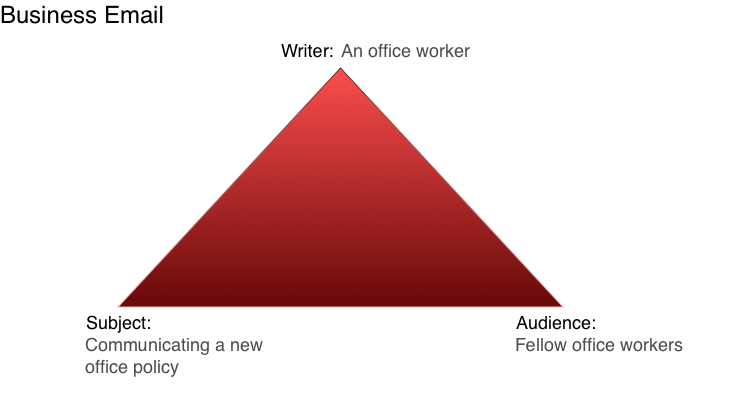How do writers respond to audience expectations?
In our study, we learned that we think about the needs and expectations of our readers by making decisions about the kind, the direction, and the purpose of our writing.
What are our audiences’ expectations?
Meeting the needs and expectations of audiences gives writing more impact, but sometimes it is difficult to know what audiences expect.
FOR INSTRUCTORS: Student writers will face many choices in engaging with their audiences.
In thinking about their audiences, some students might shift between different kinds of academic and non-academic writing.
For example, as Lizzie Hutton and Gail Gibson found, “students who align their writing development with the ‘academic’ tend to see writing as constituting the communication of thought” (90).
In other words, some students prefer to write in ways that match the writing of a particular style or discipline (e.g., science).
On the other hand, “students who talked about their growth as writers as more closely tied to the ‘creative’ tend to understand writing instead as constituting the generation of thought” (90).
In this case, some students prefer to write in a way that creates new ideas.
Using different kinds of writing helps us reach audiences in different ways.
Asking students to write about who their audience is and how they are reaching them can help them align their writing with readers they envision.
As Ryan McCarty’s chapter shows, students’ experiences and perspectives of their roles as writers and their writing influence the way they see their audiences.
Are we writing to or for audiences?
Writing to others means communicating ideas to a specific person or a specific group of people.
As Anne Gere’s chapter shows, Stephanie reflects on how she uses writing as a trade credit underwriter to speak to her readers.
Writing for others can mean making communication accessible to as many readers as possible.
Let’s consider Dan, who uses social media to reach out to his audience.
When we write to our audiences, we call their attention in some way, and when we write for our audiences, we invite them into our writing. In either case, we are thinking about different ways of engaging with them.
How can we make writing matter for audiences?
Reaching audiences can depend a lot on kinds of writing and purpose.
One challenge is knowing which kinds of writing are appropriate for the audiences being addressed.
Consider Kris, who finds the language of science to be a necessary step in her development as a writer.
Another challenge is making sure purposes for writing are clear to audiences.
Consider Kaitlin, who explores how her multimodal purposes affect how her audiences think about traveling.
And so, we make our writing matter for our audiences by making choices about style and delivery.
Putting it all together
Writers make important decisions about what to write and for whom. Click on the options below to see relationships between writing situations and writers: identities, the topic, and who the readers are.
- Business Email
- Personal Email
- Scientific Article
- Short Story
- Academic Essay

Good writers think about their audiences’ needs and expectations, including how choices they make can meet those needs and expectations.